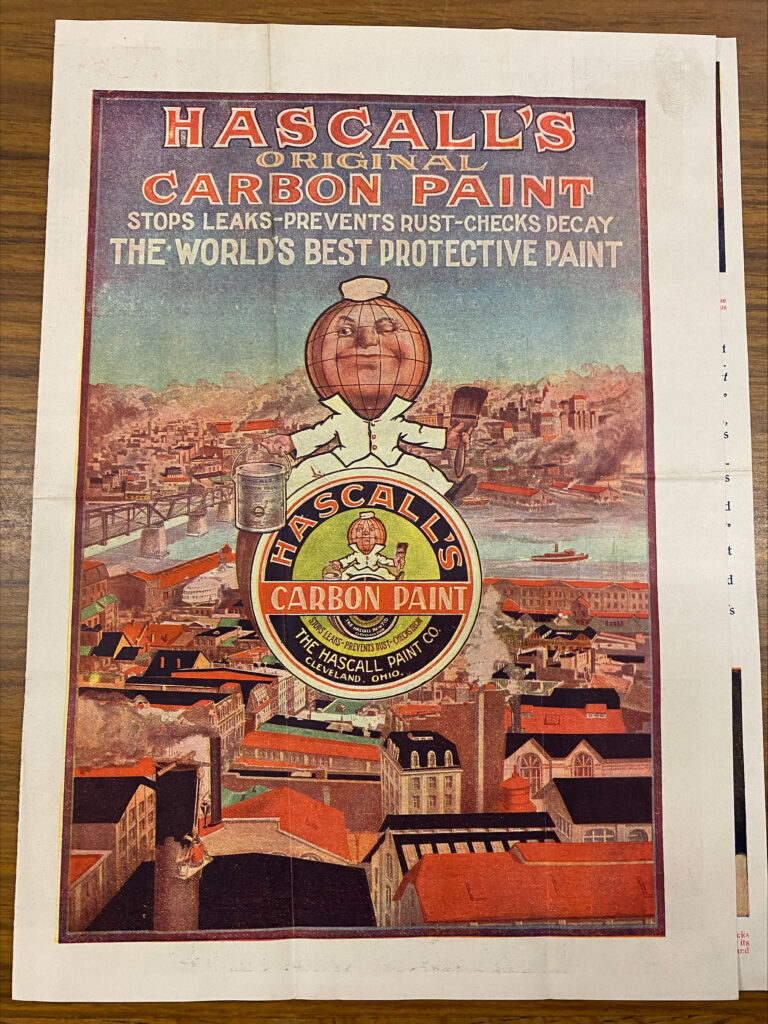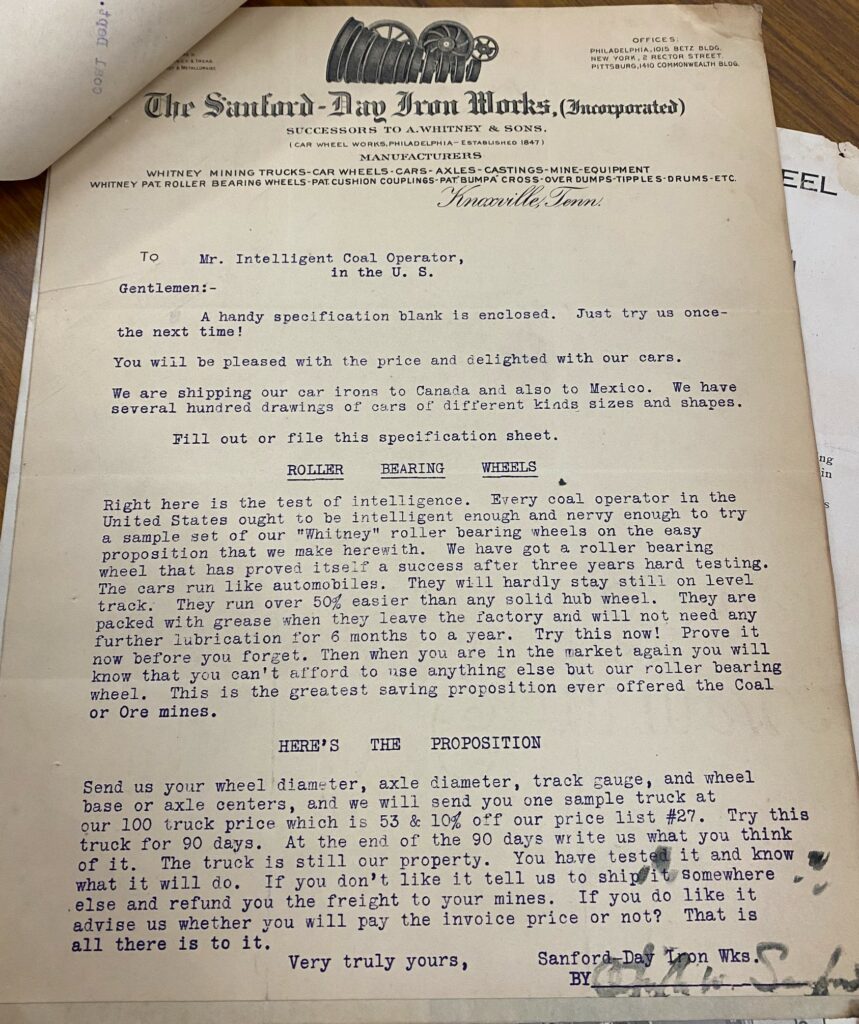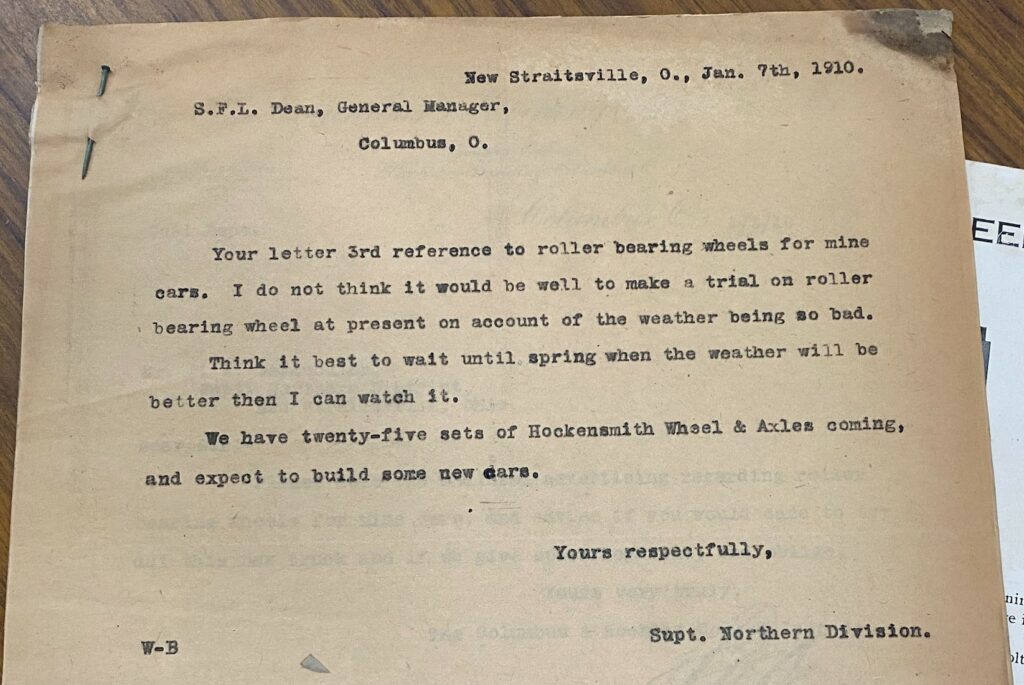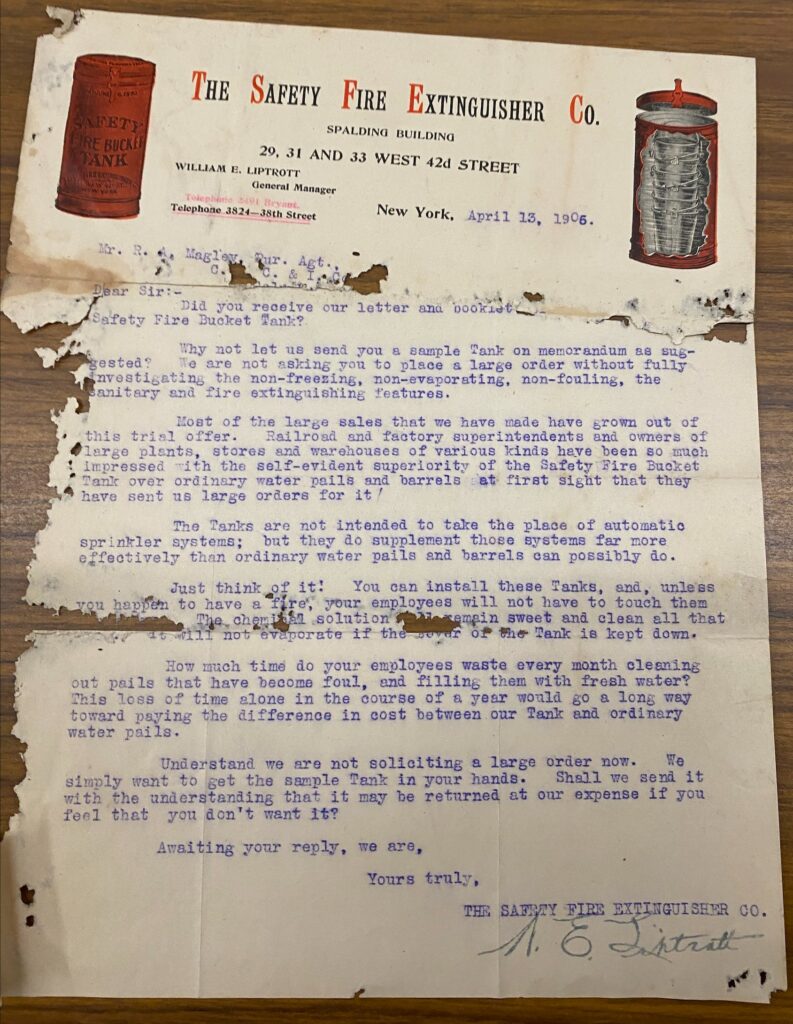By Gail Booth, History and Anthropology BA ‘23 , Spring 2023 Archives Intern
When is the last time you saw an ad that actually talked about the product’s qualities and not what buying whatever it is will make you feel? Today advertisements promise feelings and experiences instead of talking about other user’s testimonies and promising free trials.
The Columbus and Hocking Coal and Iron Company (CHCIco) records provides a pathway into looking at what advertisements to companies were like in the early 1900s and how companies responded to them. The collection consists of documents from a coal mining company that was in business from the late 1800s to early 1900s in southeast Ohio and mostly consists of items created by the company. The few exceptions I have seen are the bills and advertisements that were sent to CHCIco. These advertisements range from selling neckties, to paint, to fire buckets, and show how sales strategies have changed over time.

The first advertisements I saw in this collection were from Hascall’s Carbon Paint which included tons of promotional items: a pamphlet, swatches of the paint types, and a sample 5-year bond warranty. This ad really caught my eye due to the cover being a full-color picture of their mascot above a city painted in only the colors of paint they offer, a clever way to catch they eye and advertise. The writing inside the booklet talks about how long-lasting and effective this paint is compared to other paints, like lead, and also shows images of Hascall’s on different types of surfaces.

Hascall’s also sent a swatch page, and a warranty bond, that promised the paint to last for five years or they would replace it, and would refund companies if they were not satisfied by their 30 day trial. I found this advertisement interesting as it constantly stressed the quality of the paint and how long it took the company to formulate the product. I found this tactic very similar to how health and beauty ads today will say it took experts a certain amount of years to develop this product.

While most of the ads in the collection did not warrant any response from the company, other than being kept, the roller-bearing wheels were of much interest to CHCIco. These wheels from the Sandford-Day Iron Works Inc. were to be used in the mines to make them easier to get coal out. This caused a series of letters to be sent back and forth from superintendents about trying the wheels out in the mines.

It was decided that they would have to wait until the following spring as weather was very bad at the time the ad was sent. Unfortunately, if this purchase was followed up upon, I have not yet seen it in the collection. However, I still found this ad to be very interesting as it shows the chain of command purchases for the mine would have to go through, and that ads were used to determine what to buy for the business. This ad said that the wheels would run like a cars would on level ground and held grease very well, which again appealed to the actual benefits of the product. It feels like in these two cases the product is what sells not the ad.

That is not to say that the products being advertised back then were better, or not just fancy marketing. The CHCIco collection received an ad for fire extinguishers, that promised to reduce the amount of time it took to put out fires, by making it easier for the workers to snuff them quickly. The language of the ad makes you believe this fire extinguisher is advanced and uses technology like chemical reactions to quickly kill the fires. In reality, all the company was selling was a red container holding normal buckets. They justified this by saying it would make it easier for workers to find buckets to put out the fires but a designated bucket area would be just as effective. In the case of this ad it’s not about the product but the marketing. Unfortunately for The Safety Fire Extinguisher Co. the supervisors at CHCIco didn’t write about buying any fire buckets.
This ad reminded me the most of modern ads where a lot of money is put into advertising the product and not developing it. Even though Hascall’s Paint, and the Standford-Day Iron Works wanted to sell their respective items, they actually had products to sell that weren’t things you could just buy at a company store. Looking at these ads I was surprised to see how similar they were to those of today. While they are certainly less refined than the ads of today, they used flashy pictures, free trials, and careful advertising to try and get people to buy their products.
